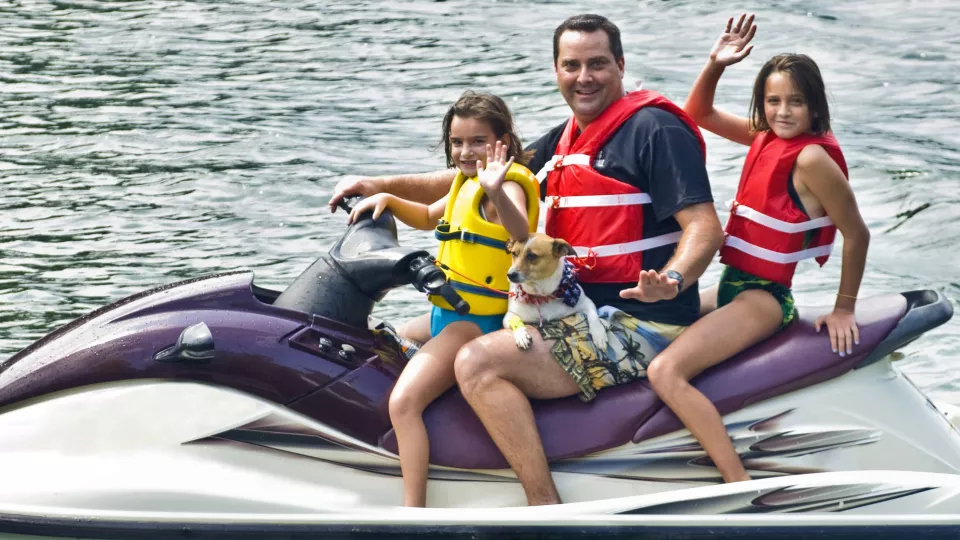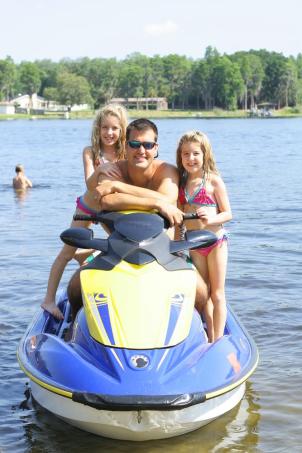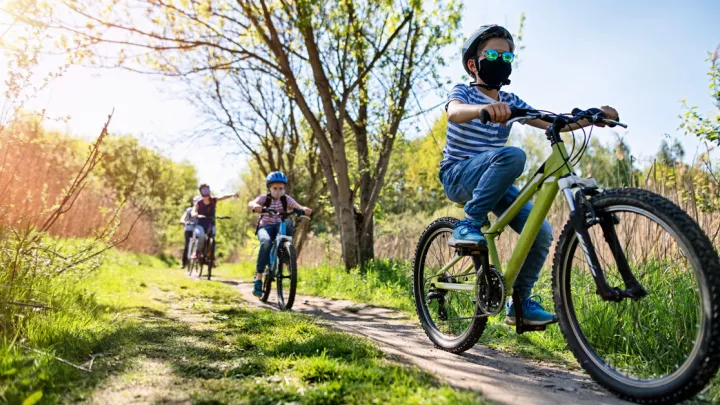
Summer Safety: Personal Watercrafts
Some of my favorite childhood memories were when my parents loaded up the family truck, packed the camping stuff, hitched the Jet Skis and off we went to the bay! Naturally, as a father of two wonderful boys, I wanted them to experience the same feeling that comes with the freedom of being on the water. The wind blowing through their hair and the freedom to cross water, you kind of feel like a modern-day explorer of the seas!

Summer is here and that means fun in the sun. For most kids, that also means more free time for summer activities: swimming, wake boarding, jet skiing, boating, scuba diving, backpacking and more. While personal watercraft and other water activities can be thrilling and energizing, they also have risks. According to the Center of Disease Control, drowning ranks fifth for leading causes of unintentional injury death among people between the ages of 5 and 24 in the United States. These activities don’t have to be dangerous, though. Most water-related accidents can be avoided by knowing how to stay safe and follow a few simple guidelines. Learning how to swim is essential if you plan to be in or near water.
Personal watercraft became commercially available during the 1970s when Kawasaki Motors Corporation introduced the Jet Ski. This craft allowed a person to maneuver a small boat while standing up. Newer sit-down models made by several manufacturers allow as many as three people on board, can pull a water skier, and may be able to reach speeds of 60 miles per hour. The lure of speed and mobility at a relatively inexpensive price has proven irresistible to many recreational boaters. Jet Skis and WaveRunners are fun to ride, but each year many kids get hurt while riding them. The following are some guidelines to keep your children safe while on the water.
What to do BEFORE you get on a personal watercraft:
- Check the weather forecast for your destination. Plan clothing, equipment and supplies accordingly.
- Educate yourself prior to a trip by learning rules and regulations, taking recreation skills classes and knowing how to operate your equipment safely.
- Understand all signs and barriers. This includes speed limits, no-wake zones and underwater obstructions.
- Know distress signals and warning symbols.
- Make a realistic plan and stick to it. Always tell someone of your travel plans.
- Make sure you wear a Coast Guard-approved life jacket, safety glasses, a wetsuit, footwear and gloves.
- Do not ride a personal watercraft unless you have reached the legal age to do so according to your state guidelines. At present, the personal watercraft industry recommends that riders be at least 16 years old.
What to have with you on your personal watercraft:
- Enough fuel and oil for the entire trip
- Your owner’s manual and registration, in waterproof containers
- A Coast Guard-approved, working fire extinguisher and warning flares
- A Global Positioning System (GPS) unit (and make sure you know how to use it)
Rules while on your personal watercraft:
- Never climb on a personal watercraft while it is tied to a dock, on the beach or on a trailer. This could lead to an accidental fall or become pinned between dock and watercraft.
- A child should never ride a personal watercraft by themselves, or start the engine; that’s a job for an adult.
- Travel responsibly on designated waterways and launch your watercraft in designated areas.
- When riding, make sure you have a lanyard that is attached to your personal flotation device, wrist or clothing. This lanyard is a watercraft kill switch that attaches to your life vest, and instantly cuts battery power when detached from a boat or personal watercraft.
- Keep an eye out for other boaters, objects and swimmers.
- If crossing a wake, cross at low speeds and be constantly vigilant for fallen skiers, swimmers and towables.
- Keep a wide distance from boats and the shoreline.
- Do not ride at night. Personal watercrafts are not equipped with lights.
- Respect the rights of others, including anglers, swimmers, skiers, boaters, divers and others so they can enjoy their recreational activities undisturbed.
- Apply sunscreen, drink lots of water and watch your energy level.
- Know your limitations
Although statistics indicate that personal watercrafts are not involved in a greater percentage of accidents than other watercrafts, the accidents involving personal watercrafts are more likely to be serious or fatal. Thankfully, by following these tips, you can enjoy every minute of being on the water!


